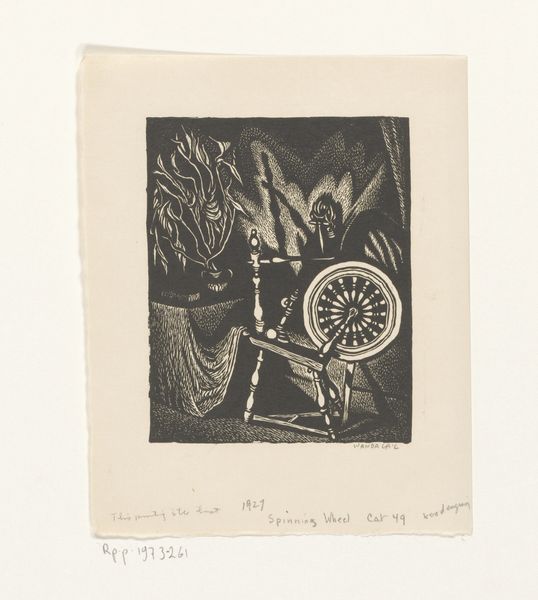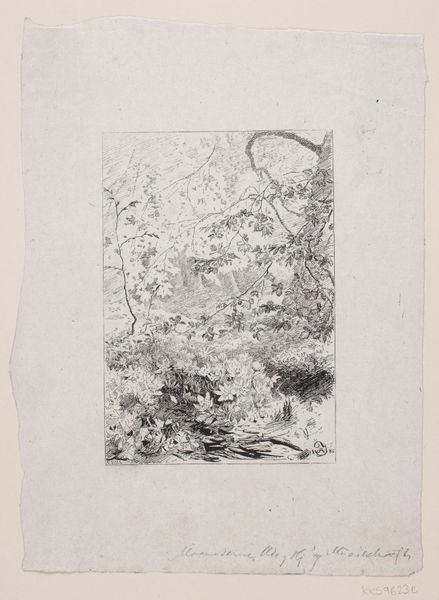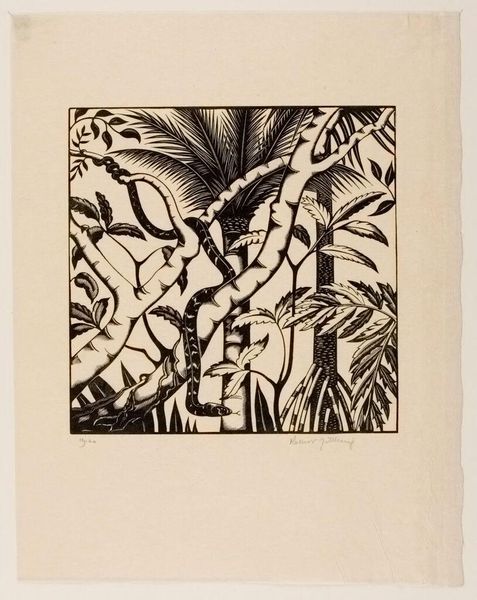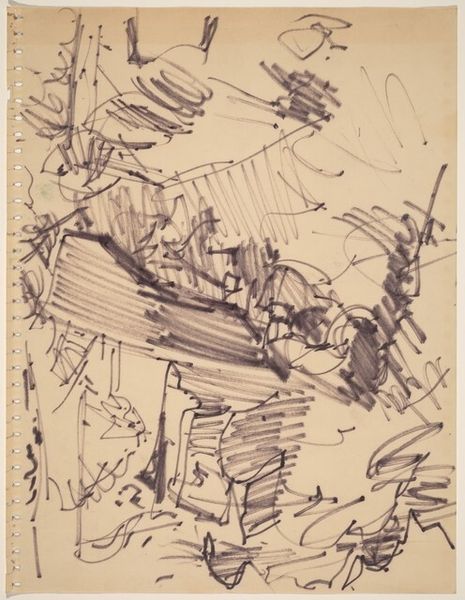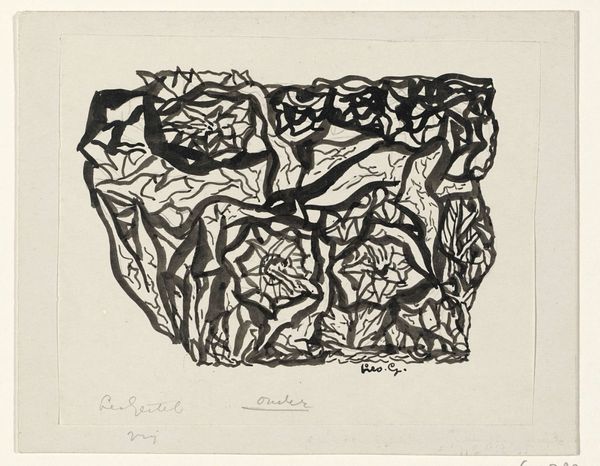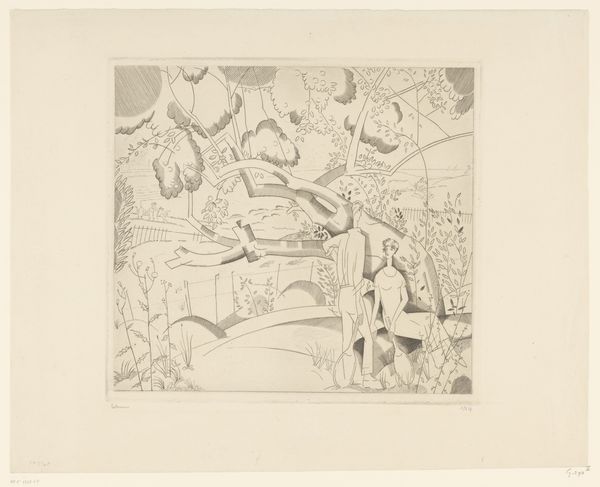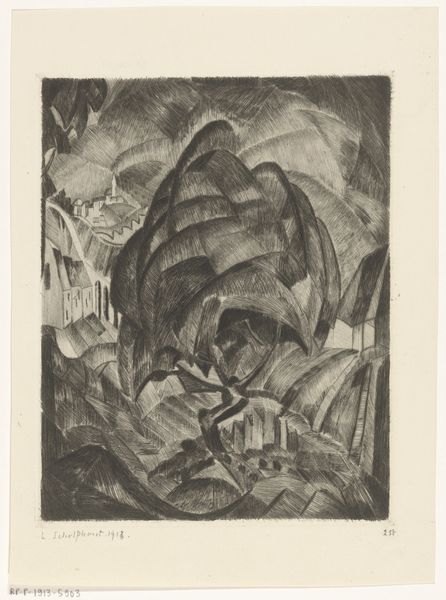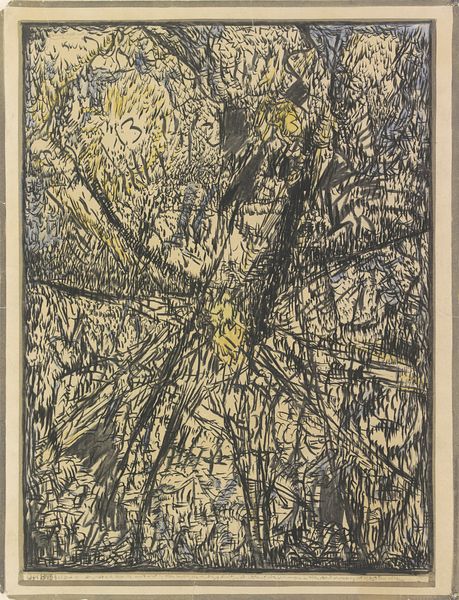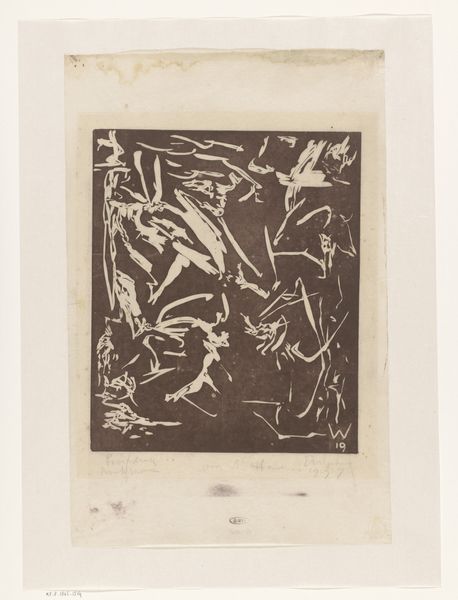
Dimensions: height 260 mm, width 214 mm
Copyright: Rijks Museum: Open Domain
Curator: Look at this drawing, friends. “Vlinders vliegen rond bladeren en bloemen”—Butterflies fly around leaves and flowers—by Leo Gestel. It was made somewhere between 1925 and 1941. He's used ink on paper. What leaps out at you? Editor: The graphic quality is so striking! The sharp black-and-white contrast creates this immediate feeling of bold simplicity. And then, as your eyes linger, the complexity of the floral patterns starts to emerge. Curator: Absolutely! It's got this Art Nouveau spirit with a touch of Symbolism thrown in for good measure. I think Gestel’s work at the time was really preoccupied with these grander notions about nature's power and the interconnectedness of all things. This drawing, for me, encapsulates that perfectly, even down to what seems like a sketchbook cover or practice page. Editor: Thinking about those themes of interconnectedness, the butterfly motif here really resonates. Butterflies have often stood in as metaphors for transformation, freedom, even the soul, right? Their presence, intertwined with the leaves and flowers, adds this layer of symbolic richness to the piece. How the butterfly shapes are very structured vs the seemingly 'free form' florals feels...interesting? Curator: Yes, you can sense the push-and-pull of organic forms versus a graphic restraint, for sure! The graphic rendering actually reminds me a bit of propaganda prints or early modern textile designs! This makes the piece itself become about communicating information or ideals or even acting as pure, stylized decor. But then you have the delicate, fluttering quality brought in by those insects. I mean... those lines could really lift off the page. Editor: Considering this piece would’ve been created between the wars, I can’t help but interpret it through a lens of political turbulence. Did these naturalistic and delicate motifs serve as an escape from the increasingly rigid, controlled environments of the interwar period? An alternative aesthetic from the stark realities and propaganda surrounding daily life? It can also serve as resistance of cultural imperialism through the means of art production in that very place in time. Curator: Oh, I think you’re onto something vital! And who knows, perhaps Gestel himself saw creating artworks like this as a quiet act of defiance or a way to assert something about the endurance of beauty. Editor: It makes me question where we, as viewers, can place ourselves when experiencing it: as outsiders looking in or as a key aspect of how this scene plays out... I'm grateful the work provides such a welcoming space. Curator: Here’s to artworks that flutter around in our thoughts!
Comments
No comments
Be the first to comment and join the conversation on the ultimate creative platform.


